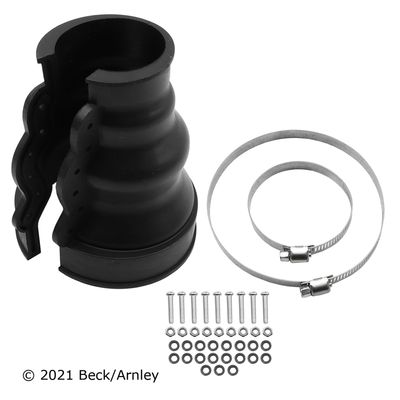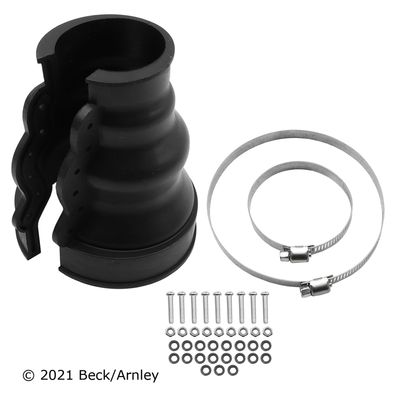Answer
Aug 21, 2024 - 04:00 PM
Yes, it is possible to install the GM Genuine Parts 19256071 CV Boot Kit yourself, but it requires some mechanical skill, the right tools, and careful attention to detail. Here’s a general overview of the process and what you need to consider:
Tools and Materials You’ll Need:- Jack and jack stands
- Lug wrench (to remove the wheel)
- CV boot clamp tool or pliers
- Flathead screwdriver or pry bar
- Torque wrench
- Socket set and ratchet
- Needle-nose pliers
- Rubber mallet or hammer
- Utility knife or scissors (for cutting the old boot)
- Grease (usually included in the kit)
- Shop rags and brake cleaner for cleaning
1. Preparation
- Safety First: Park your vehicle on a flat, stable surface, engage the parking brake, and chock the wheels. Use a jack to lift the vehicle and place it securely on jack stands.
- Remove the Wheel: Use a lug wrench to remove the wheel, giving you access to the CV joint and boot.
2. Remove the Old CV Boot
- Remove Suspension Components (If Necessary): Depending on your vehicle, you may need to disconnect the lower ball joint, tie rod end, or other suspension components to gain better access to the CV axle.
- Cut the Old Boot: Carefully cut away the old, torn boot with a utility knife or scissors. Be careful not to damage the CV joint itself.
- Clean the CV Joint: Wipe off any old grease, dirt, and debris from the CV joint using shop rags and brake cleaner. Make sure the joint is clean before proceeding.
3. Install the New CV Boot
- Apply Grease: The kit should include fresh grease. Apply the grease thoroughly to the CV joint, ensuring it’s well-lubricated.
- Position the New Boot: Slide the new boot onto the axle and over the CV joint. Make sure it’s seated properly and covers the joint entirely.
4. Secure the CV Boot
- Install the Clamps: Use the new clamps included in the kit to secure the boot in place. Position the clamps at each end of the boot and tighten them using a CV boot clamp tool or pliers. Ensure the clamps are tight and the boot is secure to prevent leaks.
5. Reassemble the Suspension Components
- Reconnect the Suspension: If you removed any suspension components, reattach them now. Make sure to torque all fasteners to the manufacturer's specifications using a torque wrench.
- Reinstall the Wheel: Put the wheel back on and hand-tighten the lug nuts.
6. Lower the Vehicle and Test
- Lower the Vehicle: Carefully lower the vehicle off the jack stands.
- Torque the Lug Nuts: Tighten the lug nuts to the correct torque specification.
- Test the Installation: Take the vehicle for a test drive to ensure everything is functioning correctly. Listen for any unusual noises and check for leaks around the new boot.
- Skill Level: This job requires intermediate mechanical skills. If you have experience with automotive repairs, you should be able to complete this task. If you’re unsure, you might want to consult a repair manual or seek assistance from a professional mechanic.
- Time: Replacing a CV boot can be time-consuming, especially if it’s your first time doing this type of repair. Make sure you have plenty of time to complete the job without rushing.
- Tool Availability: Ensure you have all the necessary tools before starting the job, particularly the CV boot clamp tool, which is essential for securing the new boot.
Yes, you can install the GM Genuine Parts 19256071 CV Boot Kit yourself if you have the necessary tools and mechanical knowledge. Following the steps carefully will help you successfully replace the boot and protect your CV joint. If you’re not confident in your ability to perform the repair, it may be wise to seek help from a professional mechanic.





Add New Comment